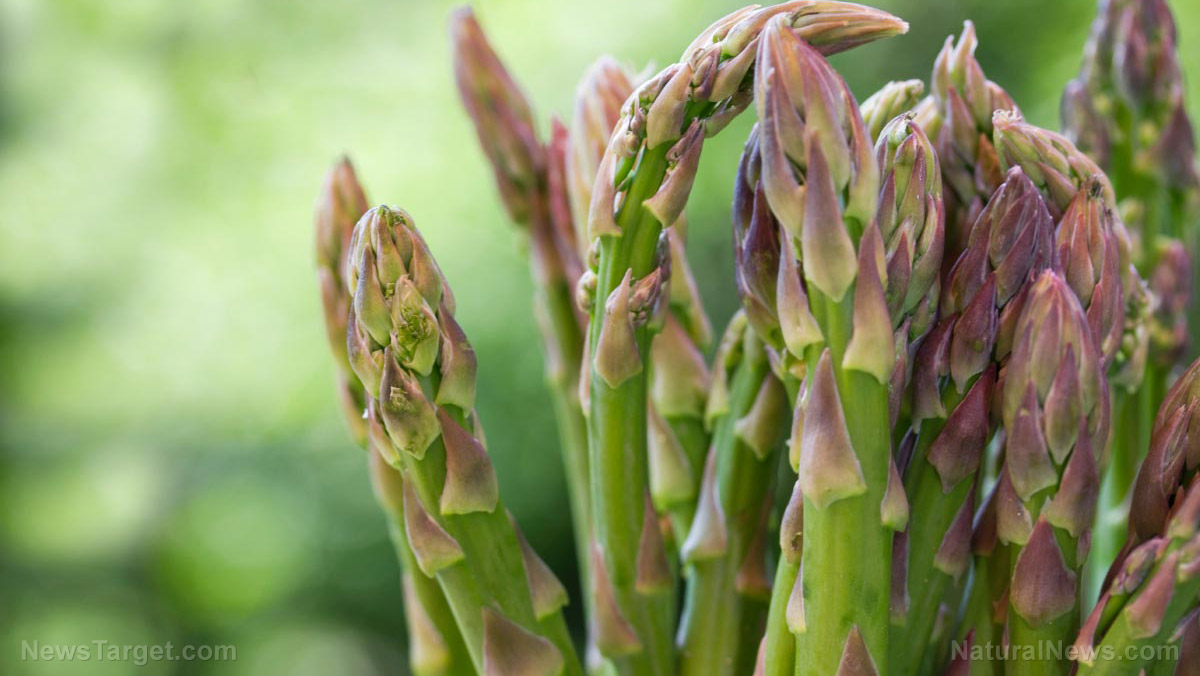
Advertisement
Asparagus is a nutrient-rich superfood. But instead of buying it at the store, you can grow asparagus in your home garden to save a bit of money.
Since asparagus is a perennial, you only have to plant it for a year and keep it healthy for years of future harvests. Detailed below are helpful tips for home gardening beginners who want to start growing asparagus.

Why grow asparagus?
Homegrown asparagus has a fresh, delicious flavor. If you’re worried about making a mistake, asparagus is easy to grow and maintain even for newbies.
As a perennial crop, you only have to plant it in the first year. After that, you can just maintain the plant and keep it healthy so you can enjoy years of future harvests.
A single planting of asparagus crowns can even keep on producing for 20 years or more.
Preparing your planting area: Choose the best spot and use compost
Since asparagus is a perennial crop, it will grow in the same space for several years. This means you must start by choosing a good planting location for long-term success.
Asparagus needs lots of sunlight, so choose a spot that receives at least eight hours of full sunlight each day. While asparagus can tolerate partial shade, it will thrive in full sun.
Overall soil quality is another factor that needs to be considered before planting. Asparagus thrives in fertile, loose and well-draining soil.
Since your crop will be growing in the same space for at least 20 years or more, you must fill the soil with nutrients before planting. Do this by working in large amounts of compost before planting. Compost will provide nutrients to the soil and help improve its fertility. Additionally, compost also improves the soil’s structure and increases drainage.
For every five square feet of planting space, work in the equivalent of two five-gallon buckets of compost using a pitchfork or shovel. Aged or composted manure can be used as an alternative to straight compost.

Asparagus crowns vs seeds
You can grow asparagus directly from seed or from crowns.
When planting asparagus in a backyard home garden, it’s easier to grow from crowns. Most of the time, crowns are also a more successful option. Growing asparagus from crowns also leads to a much earlier harvest.
Asparagus crowns refer to the roots of one- to two-year-old asparagus plants. Crowns produce an edible crop faster than seeds because of the latter’s advanced stage of growth.
Seed crops have small, early growth and they are difficult to keep weed-free during the early years, which can significantly impact crop production levels. It’s also easy to mistake them for weeds.
This is on top of the fact that asparagus seeds can be hard to germinate.
Asparagus crowns can produce an edible crop the following year after planting. But when growing from seed, you may have to wait at least three years to begin harvesting.
Choosing asparagus plants
Male and female asparagus plants have some differences. If you’re growing asparagus in your home garden, it’s best to work with male varieties since they tend to grow larger and have higher spear production levels.
There are many varieties to choose from, like Jersey Giant, Jersey Knight and Purple Passion. These varieties are heavy producers and they produce tasty veggies.
Your local nurseries will stock crowns for planting, but you can also buy them from online nurseries.
Tips for planting asparagus crowns
The trench method works best when planting asparagus.
- Start by digging a trench six inches deep and eight inches wide in the soil.
- Place the asparagus crowns at the bottom of the trench, water and cover with at least two inches of topsoil. Allow about 18 inches of space between crowns and 12 inches between rows.
- Once the crown begins to grow through the soil, add a few inches of soil, and fill in the trench slowly.
- Eventually, the trench will be filled in completely after several weeks. This trench and fill process helps the asparagus develop deep roots in the soil., which will lead to years of bountiful crop harvests.
First year of growth: Asparagus maintenance tips
Growing asparagus requires a bit of patience since you have to wait until the second year before you can harvest spears.
The crowns you planted will send up delicate spears, but you need to let them grow in the first year. Doing this allows the crowns to develop underneath the soil to their full potential.
Waiting means you also have a larger and better production in the years that follow. After your crop has died off in the fall, cut it back to the ground.
By year two, you can harvest some spears early but let the crop grow to full maturity.
After year two, you can harvest as you wish, but always allow the plants to grow until fall.

Maintaining your crops: Mulching and weeding
To keep your crops healthy, you need to keep the beds weed-free since weeds and grass compete for valuable nutrients in the soil. Note that beds full of weeds will result in smaller, less productive harvests.
One of the best ways to eliminate weeds at bay is to use a thick layer of mulch. This helps suppress and eliminate weeds and weed seeds. Additionally, it keeps valuable moisture in the soil for plants.
Use either straw or shredded leaves to mulch and keep your beds weed-free throughout the year. Add a two- to four-inch-thick layer to keep beds under control.
During the growing season, inspect the bed at least once a week for weed seedlings. If you find weeds, grasp seedlings near the base and pull them up. Remove as much of the root as possible.
Frequent weeding early in the season helps prevent the weed roots from establishing and damaging the asparagus crowns. In late fall, add several inches of mulch to help insulate and protect the crowns through winter.
Fertilizing
Asparagus is a perennial crop that benefits from added nutrients over time, especially since the plant can slowly drain the soil of nutrients as the years go by.
Fertilize your crops in late summer or early fall using compost. Pull back the mulch, then spread several inches of compost around the base of each plant.
The nutrients from the compost will work slowly into the soil to help re-energize the soil and asparagus crowns. Doing this in late summer or early fall helps provide fresh nutrients for the following spring harvest.
Once you’re done with weeding and fertilizing, you only need to monitor your crops for weeds. Once established, the asparagus beds in your home garden will provide you with years of fresh, delicious crops each spring.
Sources:
Advertisements







